Dear MCEM Friends,
Welcome to the September 2023 edition of The Despatch, the Military Communications and Electronics Museum Newsletter.
80 Years Ago! The Invasion of the Italian Mainland
With Operation “Husky” complete and the invasion of Sicily a success it is easy to assume that Canadian troops would be moving immediately into Mainland Italy. This in fact was not the case.
The Casablanca Conference in January 1943 did not deal with the question of what might happen in the Mediterranean theatre after "Husky". American leaders thought that they should focus on the invasion of Normandy. The British believed that the removal of the Italians from combat would allow them to successfully focus on the invasion of Normandy in 1944. From the British point of view, it was unthinkable that their armies would remain inactive when Russia was so heavily engaged on the Eastern Front. The Americans did not believe that any offensive in the Mediterranean in 1943 could be on a large enough scale to draw off enough German forces from the Russian front. They feared that such a campaign would weaken the Allied resources and not change the deployment of German troops to the Western Front. The Americans wanted to have only limited operations in the Mediterranean area after the completion of “Husky”.
By mid July 1943, with the swift progress of Operation “Husky”, the Allies decided to go ahead with the invasion of the Italian mainland. The Allies hoped that by acting quickly, they would minimize German efforts to reinforce southern Italy. The fall of Mussolini in late July also supported the decision to invade the mainland. The Canadian government approved the invasion of Italy on August 16, 1943. General Simonds began planning the Canadian assault and by August 24, the invasion plans of the Italian mainland were ready.
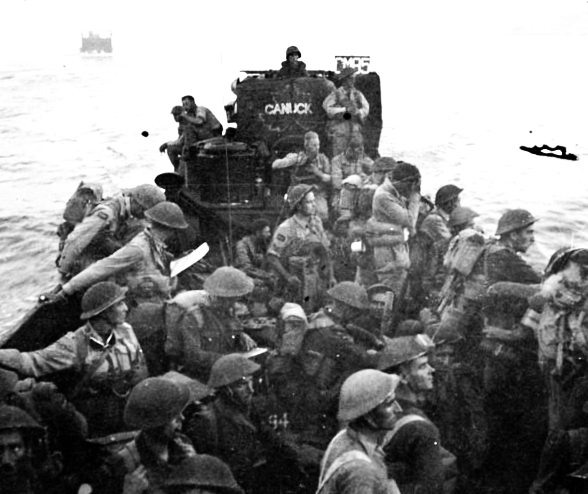
Personnel of the 3rd Canadian Infantry Brigade landing at Reggio di Calabria, Italy, 3 September 1943. Credit: LAC
Operation “Baytown” commenced on September 3rd, 1943. The landing was unopposed by the Italian troops. A wireless aerial, connected to a doorway of the Governor’s Palace, directed the landing of the battalions in Reggio. There were so many wireless sets in use that Signals formed a Wireless Security Section to monitor Canadian wireless transmissions to be certain that sets were operating on their allotted frequencies.
On September 8th, Italy surrendered to the Allies. The Germans, prepared for the Italian betrayal, killed, captured and disarmed the Italian Army over the space of two weeks. From then on, the Canadians were fighting only the Germans in Italy.
Canadian troops were able to move forward rapidly. By September 9th despatch Riders were traveling hundreds of miles to deliver messages. Wireless telegraphy, used extensively through the mountain ranges, was sometimes as far ahead as 220 miles of the main division. The Germans slowed the Allied advance by blowing up bridges, mining roads and creating machine gun nests at defensive positions.
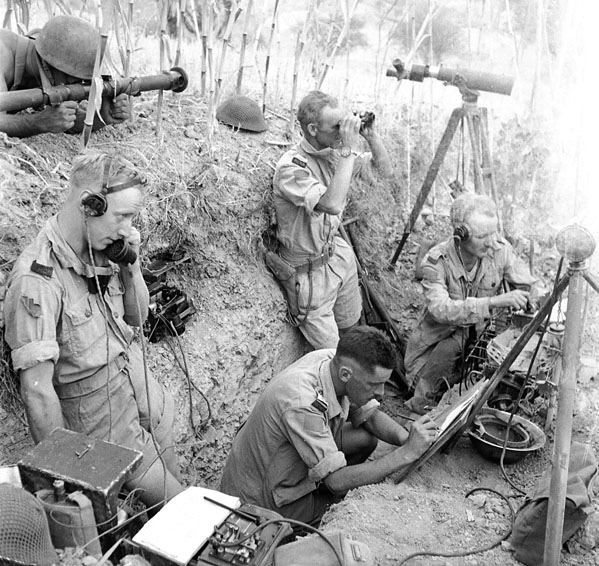
Forward Observation Post, "B" Battery, 1st Field Regiment, Royal Canadian Horse Artillery, Potenza, Italy, 24 September 1943. From left to right, Gunner Chuck Drickerson (rangefinder), Signalman Jim Tully (telephone), Regimental Sergeant-Major George Gilpin (plotting board), Captain G.E. Baxter (field glasses), and Signalman Hugh Graham (radio).Credit: LAC
By the end of September 1943, the American 5th Army had captured Naples and the Canadians and British were in the Foggia plains. The southern portion of Italy had been secured.
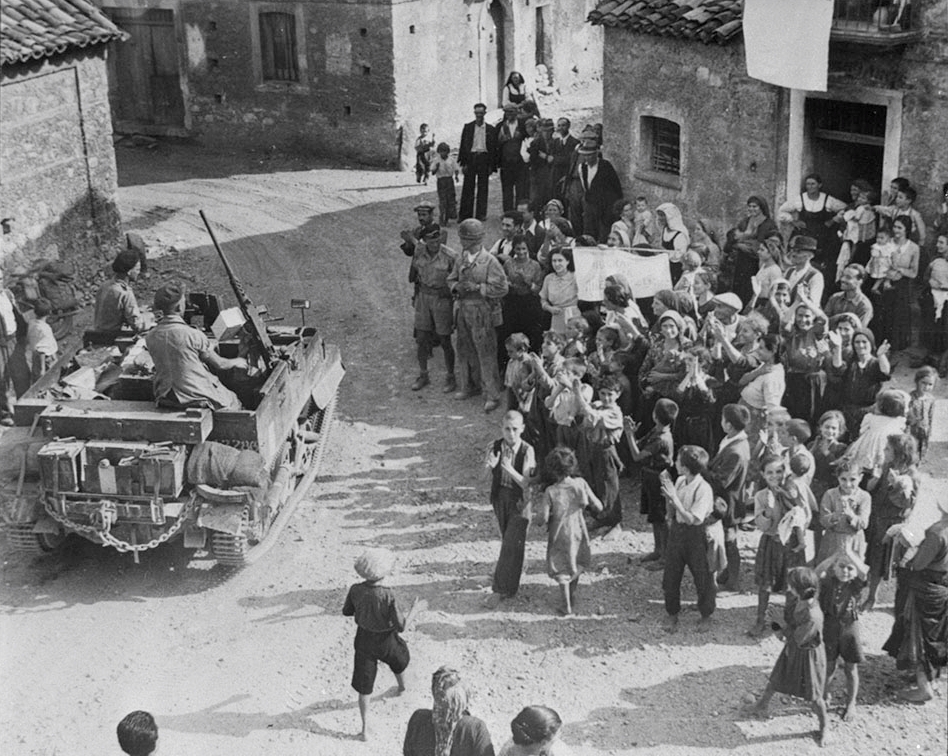
Italians greet Canadian troops enthusiastically as they pass through. Italy. Credit: LAC
Karen Young, Museum Manager
Museum Hours Change!
It’s September and our summer hours are over! The museum is open from 1000-1530 Monday to Friday as of September 5, 2023.
Coffee with Veterans
Our next Coffee with Veterans is September 12, 2023 at 1000. All are welcome! Proudly sponsored by ADGA! www.adga.ca

Garrison Discovery Week!
As part of Garrison Discovery Week, the Museum is hosting an Open House from 1800-2000 September 14, 2023! While you’re here, try our bilingual Amazing Race Scavenger Hunt!
Mercury Shop
It’s September and even though Remembrance Day is more than two months away our cut off day for medal mounting for Remembrance Day is in October! Make sure you beat the rush and get your medals in early.
Does your unit need plaques, coins, name tags or shirts? The Mercury Shop makes custom items both in house or through special order. As always, the Mercury Shop has a wide range of military accoutrements available as well as our medal mounting service all year round. Currently, we have summer hours from 1000-1545.
For more information about any of our other services, please reach out to the Mercury Shop by phone 613-541-5395 or email mercuryshop@candemuseum.org
Leala Hampel, Mercury Shop Supervisor
Branch News: C&E Week
The Communications and Electronics (C&E) Branch will hold its annual professional development week this coming October. During the symposium, active military and retired members of the C&E Branch will attend valuable PD sessions and participate in working groups to address branch challenges. Concurrent events during C&E Week are: the annual Bruce Carruthers’ Gravesite ceremony, Exercise NOBLE SKYWAVE and Army G6 Conference. C&E Week is an annual event spanning decades, traditionally held over the week of the C&E Branch anniversary (24th of October) and in the Kingston area.
The Canadian Forces School of Communications and Electronics (CFSCE) is the designated Home Station of the C&E Branch, which is why C&E Week is customarily held in Kingston utilizing Home Station and DND venues. Members of the Canadian Forces Joint Signal Regiment (CFJSR), 21 Electronic Warfare Regiment (21 EW Regt), 77 Line Regiment (77 LR), and Military Communications and Electronics Museum, also attend and support the event making CFB Kingston an ideal location to hold it.
This year’s event will run in a hybrid format from Monday, 23 October 2023 to Saturday, 28 October 2023, in the Canadian Forces Base (CFB) Kingston, Vimy Officers’ Mess.
For questions contact the C&E Branch Office at 613-541-5010 x 8397 and +C&E Branch PL-KGN.CEBranch@forces.gc.ca
For information and registration visit:
https://cmcen-rcmce.ca/ce-week-2023/
Dates: Monday, 23 October 2023 to Saturday, 28 October 2023
Location(s):
Canadian Forces Base (CFB) Kingston, Vimy Officers’ Mess - 1 Princess Royal Ave, Kingston, ON K7K 5L5
Military Communications And Electronics Museum - 95 Craftsman Blvd, Kingston, ON K7K 7B4
Bruce Carruthers’ Gravesite Ceremony hosted by CFJSR - Cataraqui cemetery 927 Purdy’s Mill Rd Kingston. Lot 155 – Bruce Carruthers’ Gravesite Ceremony Hosted by CFJSR
Registration and news (as it becomes available): https://cmcen-rcmce.ca/ce-week-2023/
Contact:
C&E Branch Office
613-541-5010 x 8397
+C&E Branch PL-KGN.CEBranch@forces.gc.ca
Not Forgotten – Lieutenant Robert Brown
CW – Mentions of Suicide
References:
A. Signals Casualties of the Great War - Details
B. C.E.F. Regimental Documents
C. First World War – Units (Canadian) – C.A.P.C. to Dep.Bn.B.C.R.
Today we will be looking at the file of Lieutenant Robert Brown. Robert was born on 20 October 1889 in Scotland to Elizabeth and Robert Brown. An accountant by trade, in June of 1915, at the age of 25, he volunteered as a Private in the 37th Battalion, Canadian Expeditionary Force (CEF) in Niagara, Ontario.
In December of 1915, he arrived in Bramshott England, and was promoted to Corporal. The following March, he was transferred to the 12th Reserve Battalion in Shorncliffe, and shortly thereafter granted the rank of Acting Sergeant. In August, he was posted to the 23rd Battalion, and appointed a temporary Lieutenant, his commission bearing the signature of King George V. Two months after, he was deployed to France, with the 60th Battalion.
In April/May of 1917, Robert was posted to the 3rd Canadian Division Signal Company, and attached to the 9th Infantry Brigade as a Signal Officer. Shortly after his arrival, Robert contracted a serious infection, and reported to the field hospital in Bruay on 5 May 1917. He was then transferred to Boulogne, and then to the Yorkhill War Hospital in Glasgow on 11 May. He underwent treatment until 30 May, and was placed on Sick Leave on the 31st for 3 weeks, as decided by a Medical Board. At the end of his Sick Leave, a second Medical Board concluded that another month was required for Robert to fully heal, but he was fit for Home Service in the interim. On 20 August, Robert was cleared to return to active service, and was posted to the Canadian Engineer Training Depot (CETD) in Crowborough, UK.
While at the CETD, he was appointed as an Instructor to the Signaling School. On 23 October in 1917, Robert was admitted to the Yorkhill War Hospital once again, for reasons not stated in his records. In May 1918, he was transferred to the CETD Signal Company and, later that month, to the Canadian Engineers Reserve Battalion (CERB) “A” Signal Company in Seaford. In July of that year, he was appointed the Assistant Adjutant of the Battalion. He remained in this position until 12 April 1919, when he was posted to the CEF, which eventually led to his posting to the Number 6 Section, Canadian Salvage Corps in June at Kinmel Park Camp in Wales.
Kinmel Park Camp was home to a series of 13 riots and disturbances by Canadian Soldiers between November 1918 and June 1919 waiting to return home following the end of the First World War (Ref D). Due to administrative issues, Lieutenant Robert Brown was unable to receive his pay for over a month, which was an unfortunately common issue for personnel waiting to return home.
On 5 September 1919, Lieutenant Robert Brown took his own life at Kinmel Park Camp, at the age of 30, and was buried in Bodelwyddan, St. Margaret Churchyard in Wales. His resting place lies alongside 81 other Canadians who died at Kinmel Park Camp. His tombstone, commissioned by his mother, reads:
“LIEUTENANT
R. BROWN
CANADIAN ENGINEERS
5TH SEPTEMBER 1919 AGE 30”
Written by Capt Sean Maas-Stevens, CFJSR
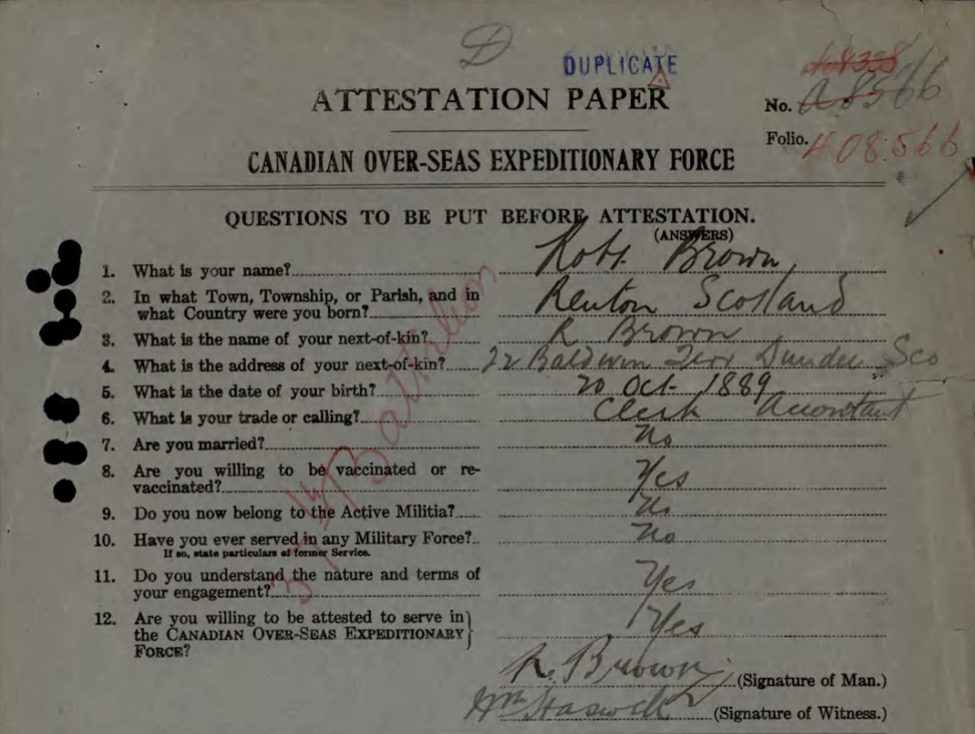
Excerpt from Attestation Papers
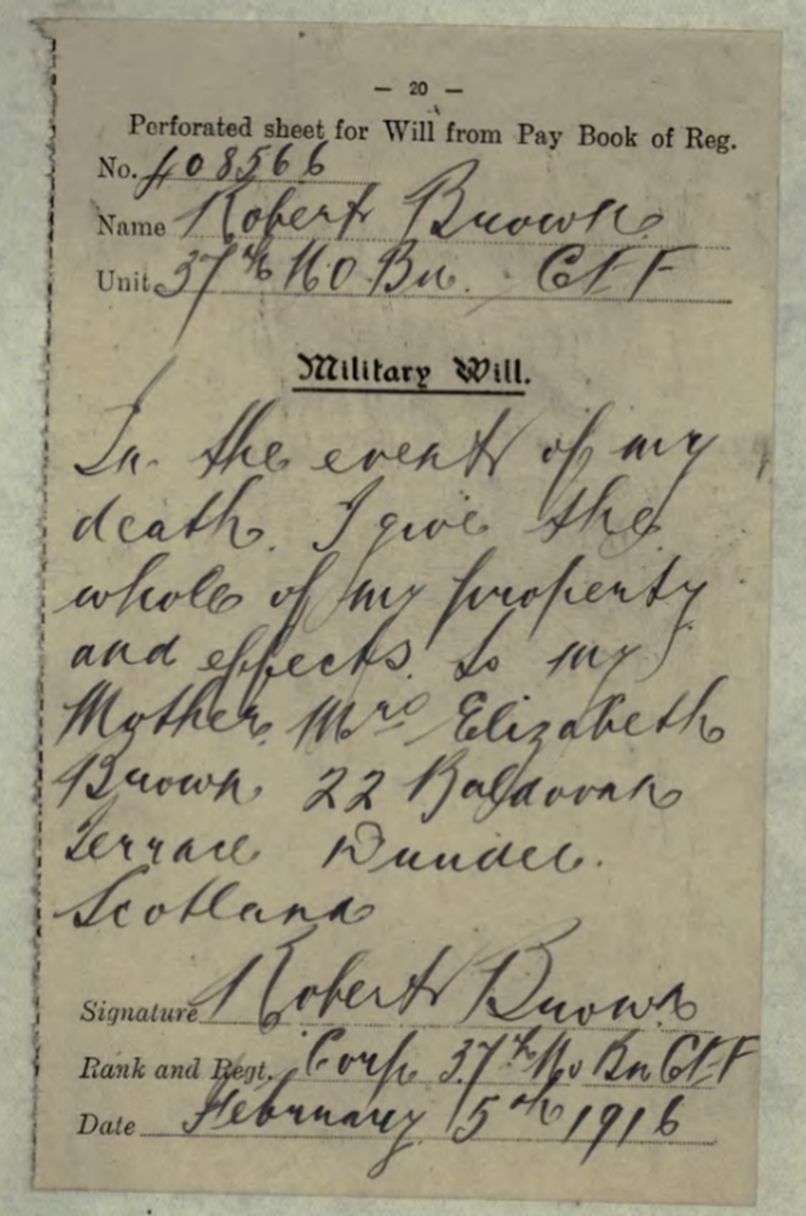
The Handwritten Will of Robert Brown
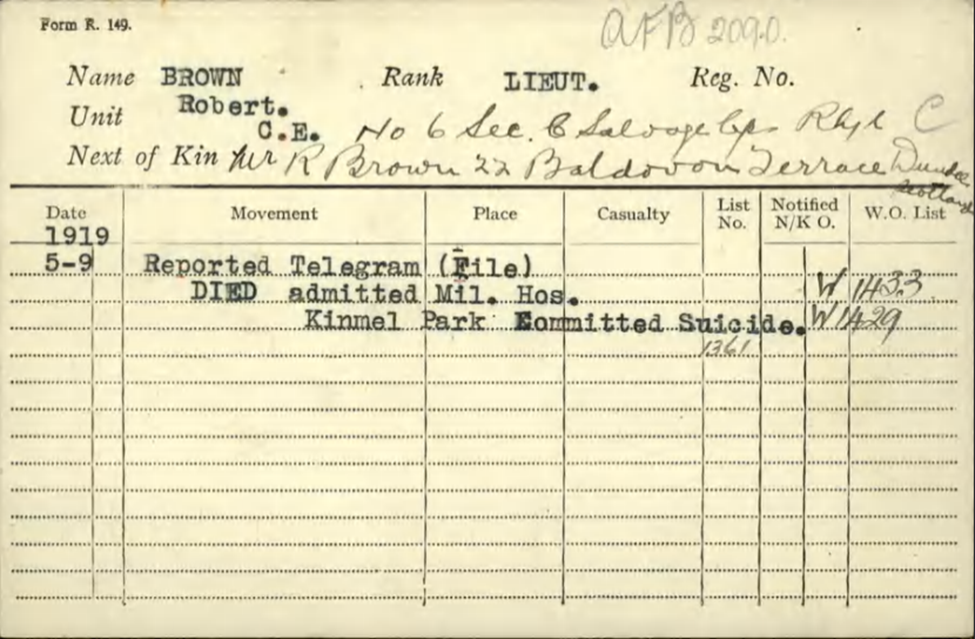
Movement Records indicating the date and details of his death
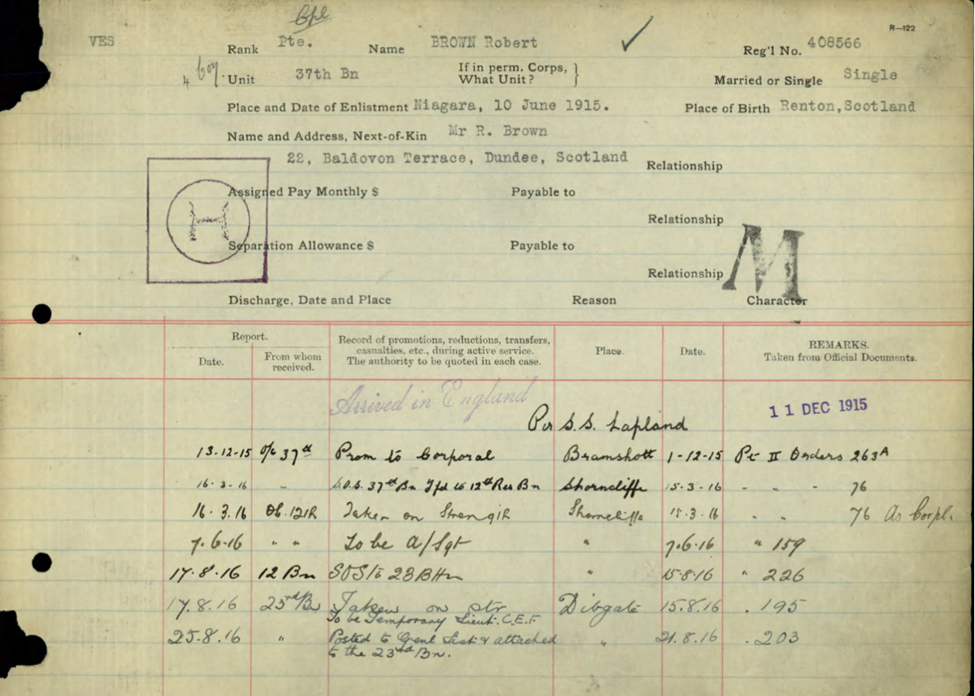
Posting History (1/3)
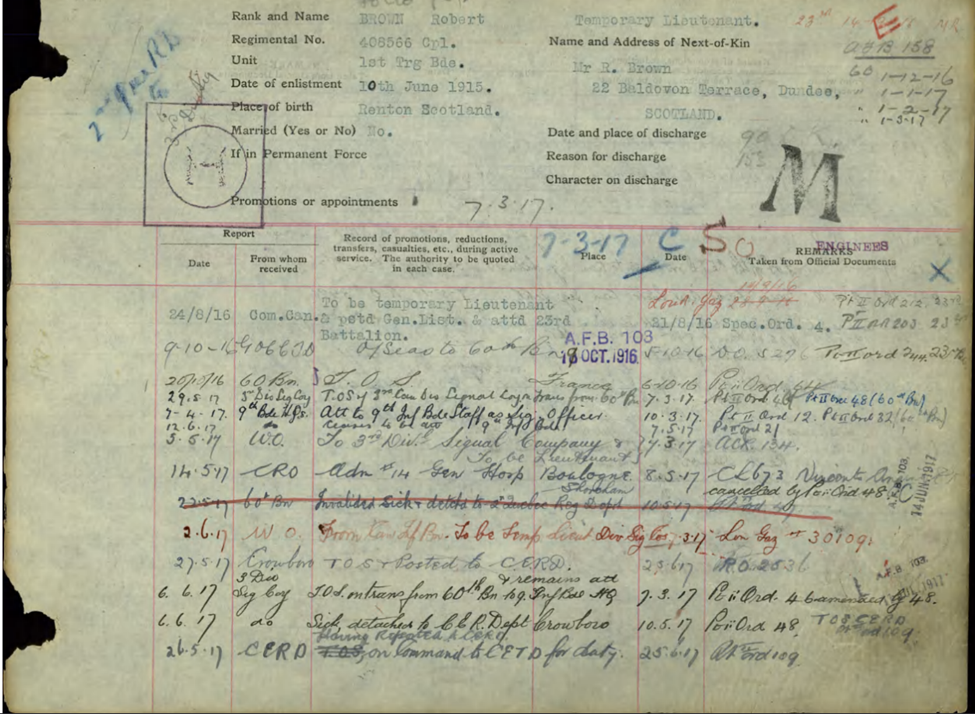
Posting History (2/3)
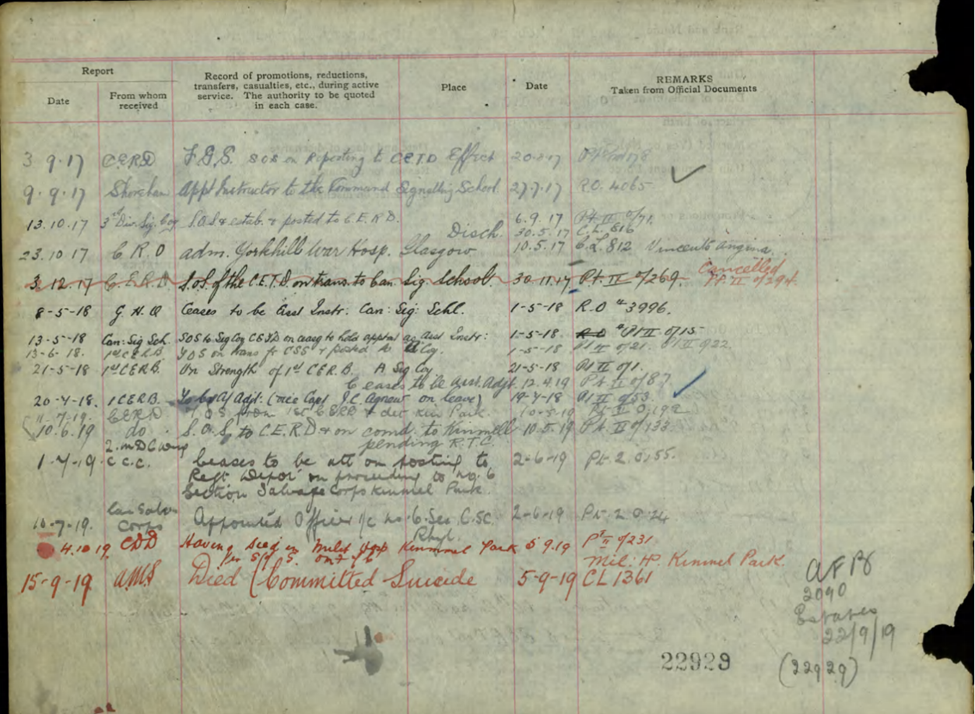
Posting History (3/3)
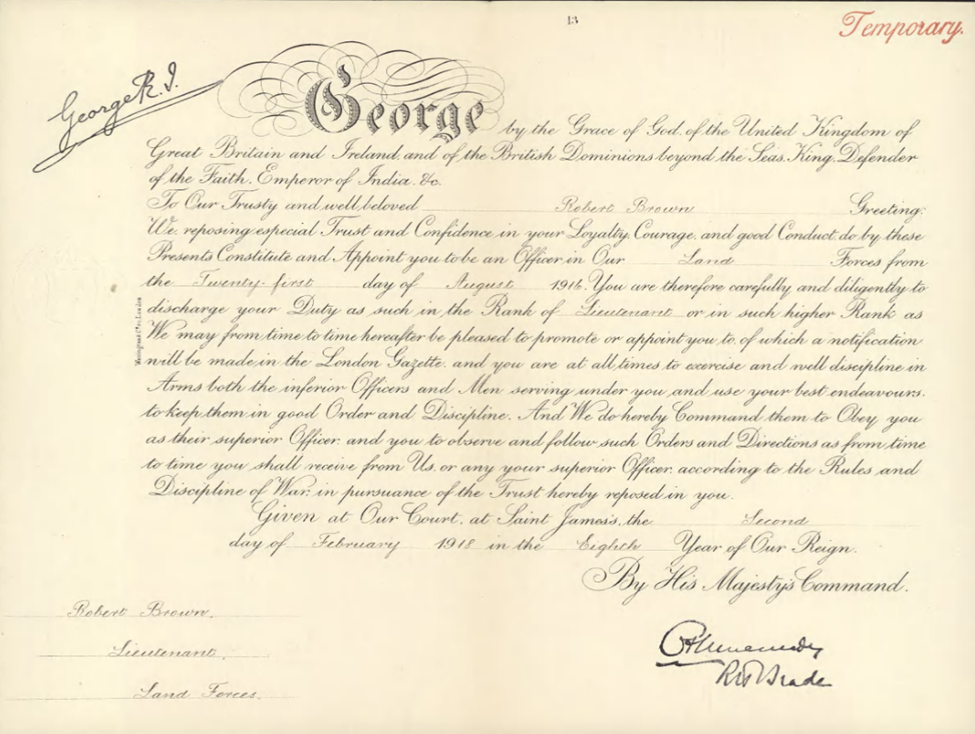
Temporary Commission of Robert Brown
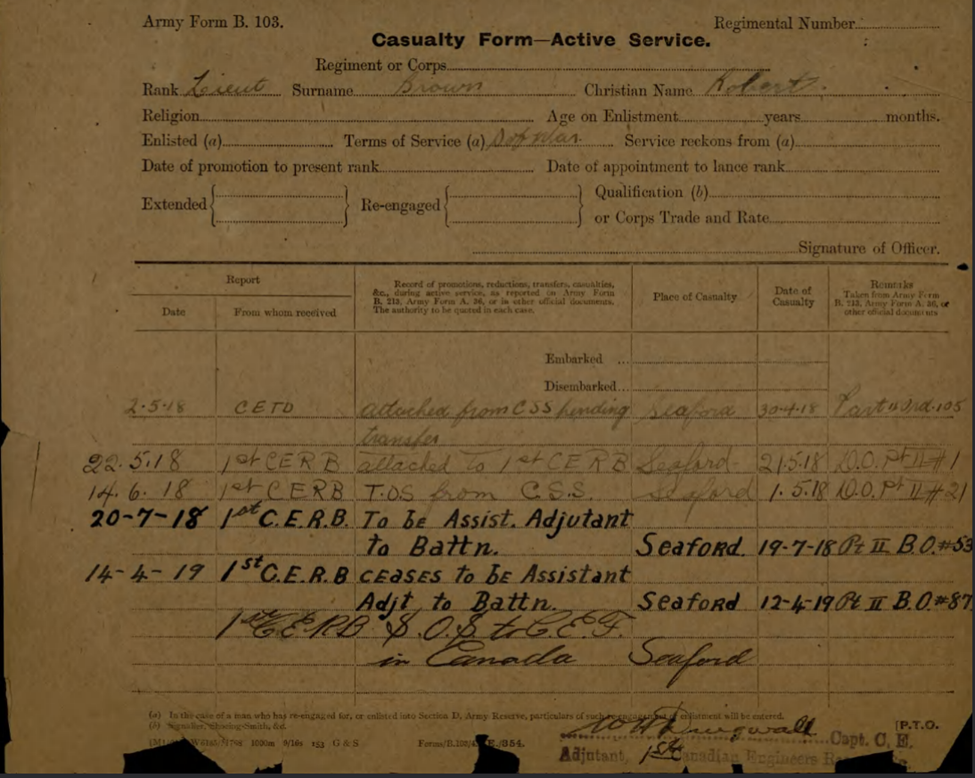
Casualty Form for Robert Brown (1/2)
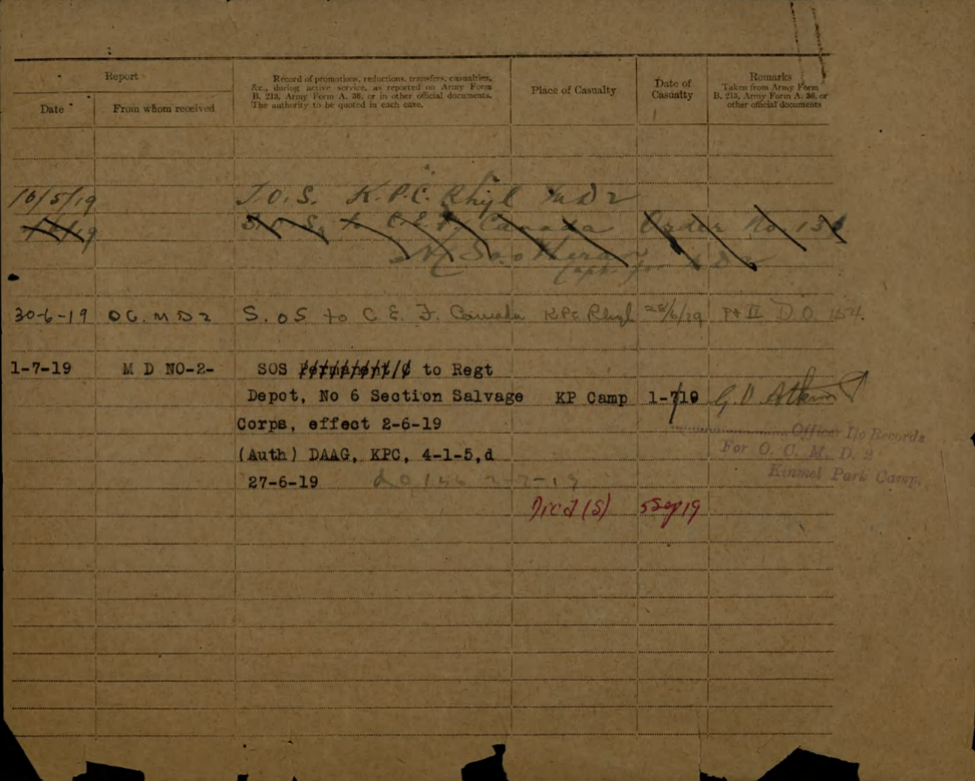
Casualty Form for Robert Brown (2/2)

